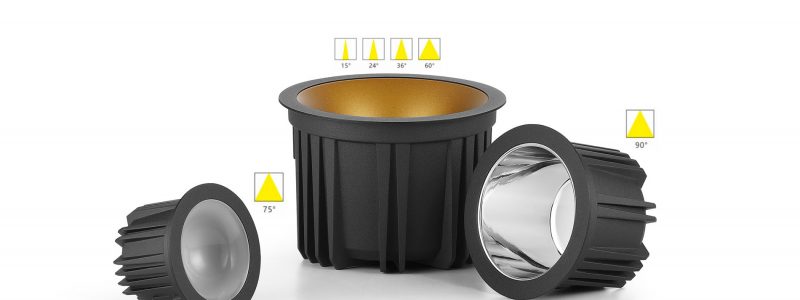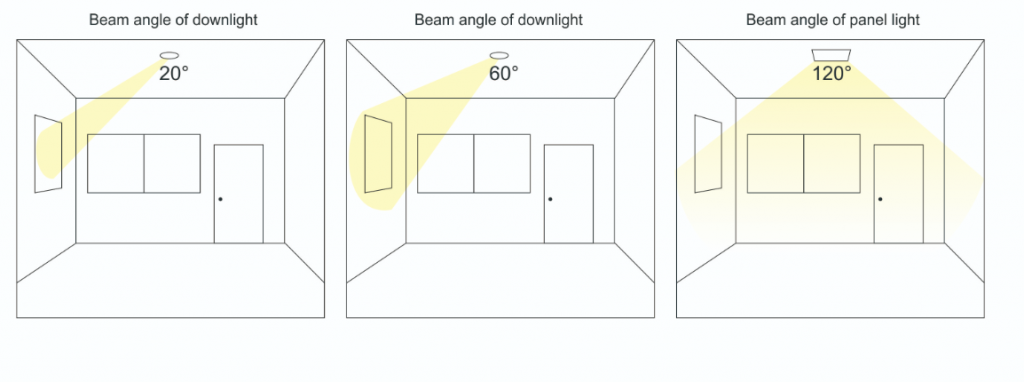How to choose the lighting angle in practical application?
Narrow Beam Angle: 8°~25° Suitable for accent lighting, such as lighting highlighting specific objects decorations or display areas;
Medium Beam Angle: 30°~45° Suitable for local lighting, also called indirect lighting, such as light rubbing against the wall, there is a feeling of raising the ceiling, reducing the sense of depression in the space; at the same time, it can still provide a moderate focusing effect at different angles;
Wide Beam Angle: 50° ~60° Suitable ambient lighting, even lighting, ideal for very large spaces, with more diffuse light hitting the floor, suitable for standard ceiling heights. , to cover a larger area, such as the living room, dining room, etc;
More than 60°, In large commercial areas, shopping centers, plazas, and other places that require a large lighting range, wide-angle spotlights can provide uniform light distribution and create a good shopping and event experience for customers;
More than 90°, Downlights above 90 degrees are suitable for occasions that require large-scale and uniform lighting, such as halls, corridors, galleries, museums, etc., where artworks or performances need to be prominently displayed;
Further, the difference in scene requirements brings about differences in light distribution. The most prominent feeling is the size of the beam angle.


